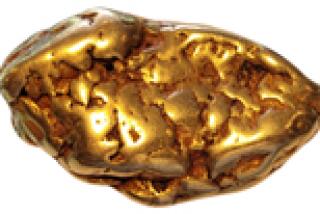Gold Bar From ‘49er Days Fetches $8 Million at Sale
NEWPORT BEACH — Eureka, the gigantic gold bar that sat on the ocean floor for more than a century, only to be consigned to a safe for years afterward while insurance companies fought over it, has been sold for a record $8 million.
The ingot, as big as a loaf of bread, is the largest known gold bar to come out of California’s Gold Rush.
It was purchased last week by a collector described only as a “Forbes 400 business executive,” said Michael Carabini, president of Monaco Financial LLC, the Orange County-based rare coin company that handled the sale.
Its purchase nearly doubled the record set previously for collectible money. In 1999, a single silver dollar sold for more than $4 million, Donn Pearlman of the Professional Numismatists Guild said Thursday.
Donald H. Kagin, author of “Private Gold Coins and Patterns of the United States,” said Eureka’s value was accentuated by its story.
“It’s important not only because of its size but because of its links with one of the most romantic eras in American history,” he said. “You aren’t just buying a lump of gold, you’re buying the story.”
The Gold Rush lured tens of thousands of people and there wasn’t enough coin currency to go around. As a result, gold was used as currency.
Eureka--”I have found it” in Greek--was handmade in 1857 by California assayers John Kellogg and Augustus Humbert. Its face was stamped with its 1857 value--$17,433.57.
“That much gold probably would have taken a half dozen miners more than a year to find,” said Adam Crum of Monaco Financial.
Indeed, the gold bar weighing nearly 80 pounds troy was so valuable that its loss contributed to the depression of the 1850s.
It had been taken by ship from San Francisco to Panama City in 1857. Later that year, it was loaded onto the S.S. Central America in the Gulf of Mexico to be transported to New York.
On Sept. 12, 1857, a day after being damaged in a hurricane, the ship sank about 160 miles east of Cape Hatteras, N.C., in 8,000 feet of water. More than 400 people died.
When word got out the gold was lost, it set off “The Panic of 1857,” according to the Library of Congress. People went to their banks demanding to withdraw their money and soon banks began to collapse. The result was a depression that lasted three years.
The gold, meanwhile, sat on the ocean floor for 129 years.
After its recovery in 1986, 39 insurance companies laid claim to the gold. Eventually, the courts awarded 92% of the treasure, including the gold bar, to Columbus-America Discovery Group, which had been founded to research and locate the shipwreck. The insurance companies got the other 8%.
The bar was eventually sold to the California Gold Marketing Group, which sold it last week.
More to Read
Sign up for Essential California
The most important California stories and recommendations in your inbox every morning.
You may occasionally receive promotional content from the Los Angeles Times.









